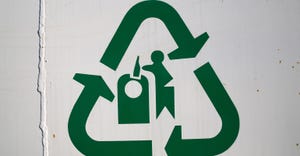April 1, 2005
Bruce A. Hooker R.F. Mattei & Associates of CA Insurance Services Sacramento, Calif.
TRADITIONALLY, BACKING ACCIDENTS and the waste industry have gone hand in hand. Such accidents account for at least 25 percent of the vehicle accidents in the solid waste field. The Mattei Companies, Sacramento, Calif., recently conducted a study on waste industry backing accidents to find out why they occur and what can be done to prevent them in the future.
The study's most significant finding was that more than half of the backing accidents resulted from drivers reversing into nonmoving objects that they did not see. The objects included poles, fences, parked cars, overhangs and fire hydrants. The objects should have been clearly visible to drivers when they first arrived.
Thus, the finding indicates that drivers are doing a poor job of making an initial scan of the collection location. Drivers have the best view of potential backing hazards when they first arrive at a site and are still facing forward, and thus can view the site through their windshields and side windows.
Although rear-vision cameras can prevent backing accidents, there is no substitute for drivers knowing their environment. According to the study, 20 percent of backing accidents occurred when pedestrians, cars or bicycles moved into the waste truck's path while it was backing up. Wrecks of this kind have the most potential for serious injury or death. For this reason, it is important that drivers use mirrors, windows, shadows and reflections — and not rely solely on cameras to see objects or people moving into their path.
The number of accidents that resulted from the waste truck driver backing in moving traffic situations was another disturbing statistic. This can occur when a driver misses a collection stop or a turn, or pulls too far into the intersection and tries to correct it by reversing. Backing any vehicle in traffic is dangerous. Such actions are clearly unsafe and unacceptable, given a waste truck's enormous rear blind spot.
Three percent of the study's backing accidents involved drivers reversing into objects that the driver was aware of, but misjudged the clearance or the distance to them. This means the driver was inexperienced or unfamiliar with the vehicle. Many of the accidents occurred on residential collection routes, where drivers often have less backing experience.
To significantly reduce the risk of such accidents, fleets can take the following precautions:
Establish a written company policy regarding proper backing procedures and have drivers sign a statement indicating that they understand the policy.
Conduct safety meetings for all current drivers and establish a training session for new drivers to make sure that everyone is familiar with the company policies and how to backup a waste truck safely.
Establish a program of clandestine driver observations and/or supervisor ride-alongs with drivers to ensure that policies are being followed.
Frequently remind drivers of the importance of safe backing. This can be accomplished with bulletin board messages, paycheck stuffers, reminders during regular driver safety meetings and periodic announcements over the radio.
Structure routes and pickup locations to minimize backing whenever possible.
Make sure that backing beepers, rear vision cameras and mirrors are working properly.
Consider including backing cameras on all new truck purchases and retrofit current vehicles with backing cameras if possible. This is especially important for one-person routes.
Make safety performance and safety policy compliance part of a driver's performance review and part of any safety incentive or bonus programs.
You May Also Like


